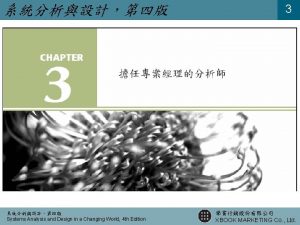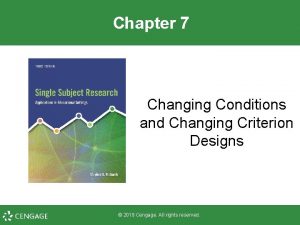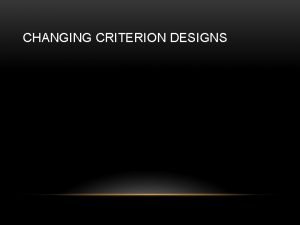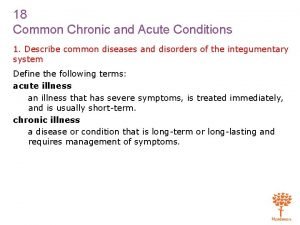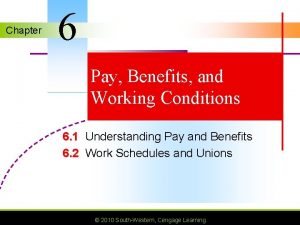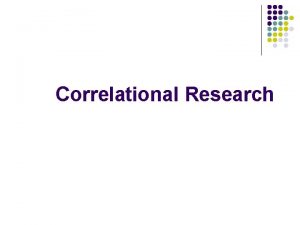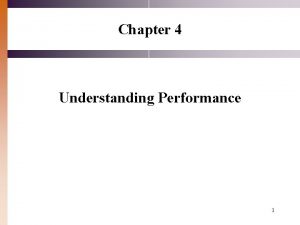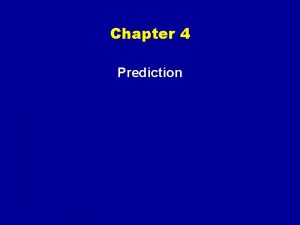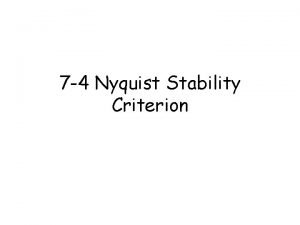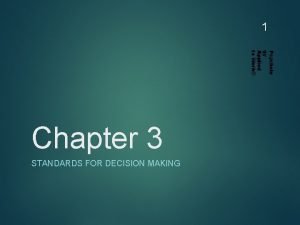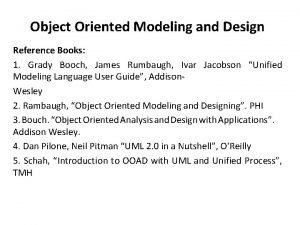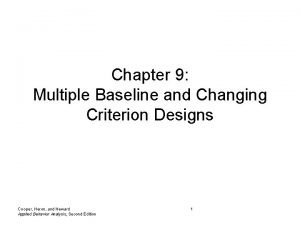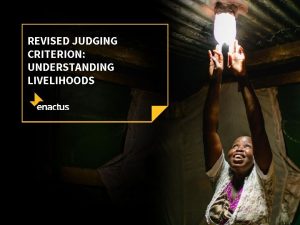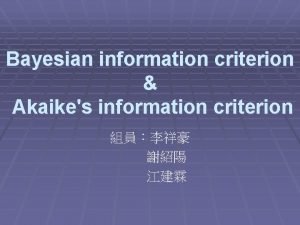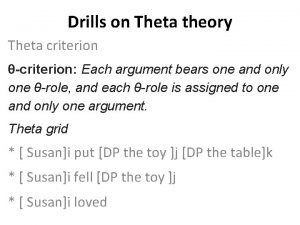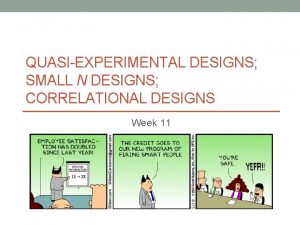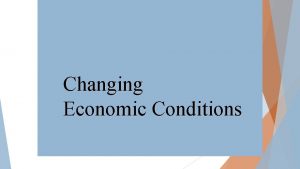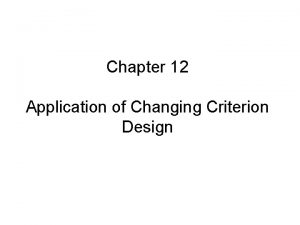Chapter 7 Changing Conditions and Changing Criterion Designs





















- Slides: 21

Chapter 7 Changing Conditions and Changing Criterion Designs © 2019 Cengage. All rights reserved.

Learning Objectives • • 7 -1 Describe the procedures for and uses of changing conditions designs. 7 -2 Apply knowledge of changing conditions designs to a case study. 7 -3 Describe the principles of prediction, verification, and replication in changing conditions designs. 7 -4 Identify the advantages and disadvantages of the changing conditions design. 7 -5 Describe the procedures for and uses of the changing criterion design. 7 -6 Apply knowledge of changing criterion design to a case study. 7 -7 Describe the principles of prediction, verification, and replication in the changing criterion design. 7 -8 Identify the advantages and disadvantages of the changing criterion design. © 2019 Cengage. All rights reserved.

7 -1 The Changing Conditions Design (1 of 3) • An extension of A-B design – Various changing conditions designs can be used to evaluate the effects of more than one treatment or a combination of treatments • The simplest changing conditions design is A-B-C – A represents baseline – B represents Treatment 1 – C represents Treatment 2 – The hyphen between Treatments 1 and 2 represents that they are presented independently © 2019 Cengage. All rights reserved.

7 -1 The Changing Conditions Design (2 of 3) • Multiple treatment designs – Changing conditions designs that include the reintroduction of baseline conditions • A-B-C Designs and Response to Intervention – Response to Intervention (RTI) model § Widely used in general education and special education to help identify students with learning and behavior problems – A tiered approach in which students progress through stages of more intense intervention with the goal of remediating problems § Goal of avoiding the need for a referral for special education – Using the A-B-C design with the RTI model § Each tier can be thought of as a different letter © 2019 Cengage. All rights reserved.

7 -1 The Changing Conditions Design (3 of 3) • The A-B-A-C (multiple treatment) Design – The difference between A-B-C design and A-B-A-C design § In A-B-A-C, another baseline condition is introduced between the treatments – The advantage of A-B-A-C design § The functional relationship can be better established because of the return to the baseline before the “C” condition © 2019 Cengage. All rights reserved.

Figure 7 -1 Example of Data from a Changing Conditions Design (A = baseline, B = prompts, C = praise) © 2019 Cengage. All rights reserved.

Figure 7 -2 Data from Subject 1 in the A-B-A-C Study © 2019 Cengage. All rights reserved.

Figure 7 -3 Kumar’s Spelling © 2019 Cengage. All rights reserved.

7 -3 Prediction, Verification, and Replication in Changing Conditions Designs • • Depends on the specific combinations of treatments and when and where baseline conditions are reintroduced Prediction – Ex. : You could predict that the “A” condition will change as a result of the introduction of “B” and “C” • Verification – Depends on the return to baseline following a specific treatment condition • Replication – Occurs when the conditions are reintroduced © 2019 Cengage. All rights reserved.

7 -5 The Changing Criterion Design (1 of 3) • • Changing criterion design involves the evaluation of the effects of a treatment on the gradual, systematic increase or decrease of a single target behavior Accomplished by carefully changing the criterion levels necessary to meet contingencies to increase behavior or to decrease behavior © 2019 Cengage. All rights reserved.

7 -5 The Changing Criterion Design (2 of 3) • Changing Criterion Steps – – – Step 1 Carefully define the target behavior Step 2 Collect baseline data Step 3 Determine level of performance (criterion levels) o Determine terminal behavior or goal o Determine criterion level for the first subphase o Establish the criterion levels for the subsequent subphases Step 4 Begin the intervention Step 5 Introduce the next subphase level after the first criterion level is met Step 6 Continue through each subphase until the terminal goal is reached © 2019 Cengage. All rights reserved.

Figure 7 -4 Example of Data from a Basic Changing Criterion Design © 2019 Cengage. All rights reserved.

7 -5 The Changing Criterion Design (3 of 3) • Issues Related to Changing Criterion Designs – Three important issues to consider 1. The length of each subphase 2. The magnitude of the criterion changes 3. The number of subphases or criterion changes – Another issue to consider 4. Placement of the subphases © 2019 Cengage. All rights reserved.

Figure 7 -5 Example of Data from a Changing Criterion Design with Different Subphase Lengths © 2019 Cengage. All rights reserved.

Figure 7 -6 Example of Data from a Changing Criterion Design with a Reversal to a Previous Criterion Design © 2019 Cengage. All rights reserved.

Figure 7 -7 Example of Data from a Changing Criterion Design with a Return to a Baseline Phase © 2019 Cengage. All rights reserved.

Figure 7 -8 Data for the Subjects in the Study Using a Changing Criterion Design with Return to Baseline © 2019 Cengage. All rights reserved.

Figure 7 -9 James’s Math Problems Solved © 2019 Cengage. All rights reserved.

7 -7 Prediction, Verification, and Replication in the Changing Criterion Design (1 of 2) • Prediction – Prediction of the levels of future behaviors is made when stable responding is attained within each subphase • Verification – Is possible when either of two of the previously discussed suggestions to increase internal validity is made § By varying the lengths of the subphases § Demonstrated when the direction of the criterion levels is reversed and the behavior returns to a previously set criterion level © 2019 Cengage. All rights reserved.

7 -7 Prediction, Verification, and Replication in the Changing Criterion Design (2 of 2) • Replication – Occurs every time that the behavior changes in the predicted direction based on the predetermined criterion levels © 2019 Cengage. All rights reserved.

7 -8 Advantages and Disadvantages of the Changing Criterion Design • Advantages – Helpful when terminal goal takes a relatively long time to reach and is challenging – Treatment does not have to be withdrawn to show its functional relationship with target behavior • Disadvantages – Behavior should change only to specified criterion level, but this is not always educationally desirable – Requires a lot of planning © 2019 Cengage. All rights reserved.
 Changing-criterion design
Changing-criterion design Advantages of changing criterion design
Advantages of changing criterion design Changing-criterion design
Changing-criterion design Qualitative paper example
Qualitative paper example Chapter 10 qualitative research designs book
Chapter 10 qualitative research designs book Important characteristic of qualitative research
Important characteristic of qualitative research Chapter 18 common chronic and acute conditions
Chapter 18 common chronic and acute conditions Chapter 6 pay benefits and working conditions
Chapter 6 pay benefits and working conditions The two measure types of criterion validity are
The two measure types of criterion validity are Type of evaluation
Type of evaluation Advantages of criterion-referenced assessment
Advantages of criterion-referenced assessment Purpose of correlational research
Purpose of correlational research Criterion deficiency and contamination example
Criterion deficiency and contamination example Predictor and criterion variable
Predictor and criterion variable What is nyquist stability criterion
What is nyquist stability criterion Api scores california
Api scores california If abc and gef are congruent by the asa criterion
If abc and gef are congruent by the asa criterion Criterion deficiency and contamination
Criterion deficiency and contamination Bracketing design
Bracketing design Computer arithmetic: algorithms and hardware designs
Computer arithmetic: algorithms and hardware designs Object-oriented modeling and designs books
Object-oriented modeling and designs books Define fashion merchandising
Define fashion merchandising
